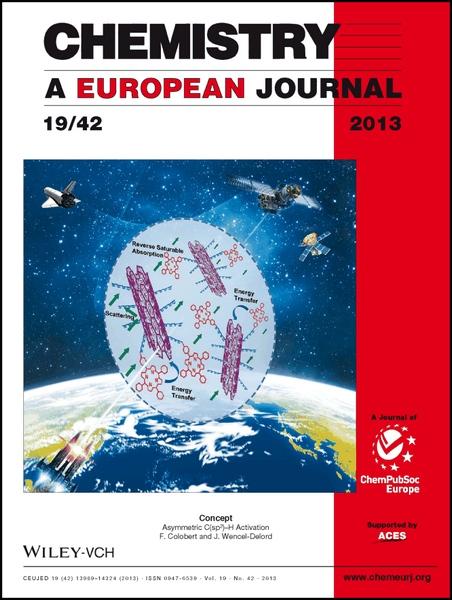Multi-walled Carbon Nanotubes, a carbon nanotubes encapsulated with overlapped multi-layered concentric graphite cylindrical surface, are of great applied values in the development of photoelectric functional materials and device due to its unique structural features and changeable mechanic, electronic and chemical properties. However, their indissoluble features in the most of organic polar solvent and aqueous phase impose great restrictions on the further development of their research and applications.
In the latest issue in October ofChemistry - A European Journal,an internationally distinctive periodical, Prof. Zhang Chi from Sino-Australian International Joint Research Centre on Functional Molecular Material, Jiangnan University (JU), published an article--Facile Synthesis and Enhanced Nonlinear Optical Properties of Porphyrin-Functionalized Multi-Walled Carbon Nanotubes.It mainly about the following research:
Porphyrin-functionalized multi-walled carbon nanotubes (MWCNTs) have been prepared through 1,3-dipolar cycloaddition reactions. Covalent attachment of porphyrins to the MWCNTs' surfaces affords composite materials with excellent solubility and facile processing. These MWCNT–porphyrin nanohybrids exhibit strong optical limiting of both nanosecond and picosecond laser pulses at 532 nm, attributed to a combination of nonlinear scattering, reverse saturable absorption, and photoinduced energy transfer.

The research has been given high appraisals with “Very Important” rating by two international peer review experts. They commented in this way: 1) “This is an excellent work in CNT area. It solves several problems and pushes nanoscale material's application further”. 2) “Attachment of the porphyrin moieties to the surface of the MWCNTs significantly improves the solubility, which is one of the most attracting topics in CNT study”.

Given the high appraisals, this article was selected as the cover article of the issue of the periodical for a highlight recommendation. The subeditor reviewed onChemistryViewswith the topic of “Pushing Back Nanoscale Frontiers”, pointing out “these new nanohybrids are promising candidates for photonic and optoelectronic devices”.
(Hyperlink:http://www.chemistryviews.org/details/ezine/5235091/Pushing_Back_Nanoscale_Frontiers.html)
Acknowledgement: The research is supported by the NationalScience Fund for Distinguished Young Scholars, the Cheung Kong Scholars Innovative Team of China’s Ministry of Education, and the International Key Joint Project of China’s Ministry of Science and Technology.


